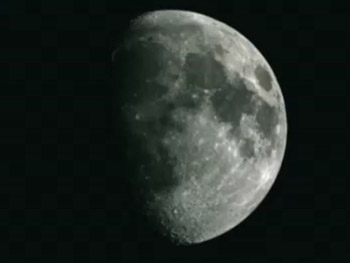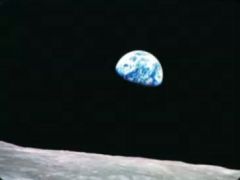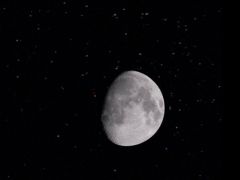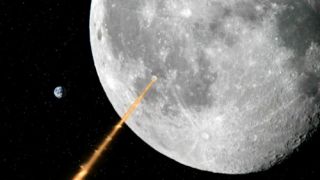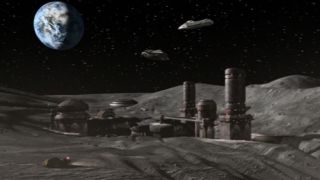Difference between revisions of "Luna"
From Trekipedia
m |
m |
||
| (6 intermediate revisions by the same user not shown) | |||
| Line 1: | Line 1: | ||
| − | {{ImageInfoBox2|name= | + | {{MyriadLuna}} |
| + | {{ImageInfoBox2|name=Luna|file=luna-tos00.jpg|caption=Luna ({{TOS01}})}} | ||
{{TableRow|title=Official Name|data=Lunar Colonies<ref name="STSC"/>}} | {{TableRow|title=Official Name|data=Lunar Colonies<ref name="STSC"/>}} | ||
| − | {{TableRow|title=Affiliation|data=[[United Earth Republic]],<ref name="ENT01"/> [[United Federation of Planets]]<ref name=" | + | {{TableRow|title=Affiliation|data=[[United Earth Republic]],<ref name="ENT01"/> [[United Federation of Planets]]<ref name="TOS01"/>}} |
| − | {{TableRow|title=Astrography|data=[[Sol system|Sol]] IIIa,<ref name=" | + | {{TableRow|title=Astrography|data=[[Sol system|Sol]] IIIa,<ref name="TOS01"/> [[Sol Sector]]<ref name="STSC"/> ([[Sector 001]]),<ref name="TNG175"/> [[Alpha Quadrant]]<ref name="STSC"/>}} |
{{TableRow|title=Distance from Primary|data=1 [[astronomical unit|AU]] (149,680,000[[kilometer|km]])<ref name="STSC"/>}} | {{TableRow|title=Distance from Primary|data=1 [[astronomical unit|AU]] (149,680,000[[kilometer|km]])<ref name="STSC"/>}} | ||
{{TableRow|title=Distance from Planet|data=384,500[[kilometer|km]]<ref name="STSC"/>}} | {{TableRow|title=Distance from Planet|data=384,500[[kilometer|km]]<ref name="STSC"/>}} | ||
| Line 11: | Line 12: | ||
{{TableRow|title=Diameter|data=3476[[kilometer|km]]<ref name="STSC"/>}} | {{TableRow|title=Diameter|data=3476[[kilometer|km]]<ref name="STSC"/>}} | ||
{{TableRow|title=Gravity|data=0.16[[gravity|g]]<ref name="STSC"/>}} | {{TableRow|title=Gravity|data=0.16[[gravity|g]]<ref name="STSC"/>}} | ||
| − | {{TableRow|title=Natural Satellites|data=Luna is the sole moon of [[Earth]]<ref name=" | + | {{TableRow|title=Natural Satellites|data=Luna is the sole moon of [[Earth]]<ref name="TOS01"/>}} |
{{TableRow|title=Points of Interest|data=[[Tycho City]],<ref name="ST08"/> [[New Berlin]],<ref name="TNG252"/><ref name="ST08"/> [[Lake Armstrong]],<ref name="ST08"/> [[Lunaport]]<ref name="STSC"/>}} | {{TableRow|title=Points of Interest|data=[[Tycho City]],<ref name="ST08"/> [[New Berlin]],<ref name="TNG252"/><ref name="ST08"/> [[Lake Armstrong]],<ref name="ST08"/> [[Lunaport]]<ref name="STSC"/>}} | ||
{{TableRow|title=Notable Species|data=[[Humans]]<ref name="ST08"/>}} | {{TableRow|title=Notable Species|data=[[Humans]]<ref name="ST08"/>}} | ||
{{TableRow|title=Notable Events|data=[[Apollo program#Apollo 11|''Apollo'' 11]] landing<ref name="TOS21"/>}} | {{TableRow|title=Notable Events|data=[[Apollo program#Apollo 11|''Apollo'' 11]] landing<ref name="TOS21"/>}} | ||
| + | {{Ad|AmazonTOSBD}} | ||
| + | {{Ad|AmazonENTBD}} | ||
| + | </div> | ||
|}</div> | |}</div> | ||
| − | Founded in [[ | + | {{BannerPrime}} |
| − | + | Founded in [[21st Century#2039|2039]],<ref name="STSC"/> the Lunar Colonies were home to more than 50 million people in the late 24th century.<ref name="ST08"/> Light from lunar cities was visible from space<ref name="DSC15"/> and, on a clear day, the surface of [[Earth]].<ref name="ST08"/> In [[2254]], the [[Talosians]] downloaded the information in the [[U.S.S. Enterprise NCC-1701|Starship ''Enterprise'']]'s computers, including data on the Moon and [[Humans|Human]] exploration of the world.<ref name="TOS01"/> | |
{{Clear|value=left}} | {{Clear|value=left}} | ||
| − | == | + | ==Image Gallery== |
| − | + | <gallery mode="packed"> | |
| − | + | luna_surface-tos00.jpg|Lunar surface ({{TOS01}}) | |
| − | + | luna-tos21.jpg|Luna ({{TOS21}}) | |
| − | + | moon-ent-96.jpg|Moon ([[Sol system|Sol]] IIIa) ({{ENT96}}) | |
| − | + | moon_surface-ent-96.jpg|Lunar surface ({{ENT96}}) | |
| − | + | </gallery> | |
| − | {{ | ||
| − | | | ||
| − | |||
| − | {{ | ||
| − | |||
| − | |||
| − | |||
| − | {{ | ||
| − | |||
| − | |||
| − | |||
| − | {{ | ||
| − | </ | ||
{{References}} | {{References}} | ||
<references> | <references> | ||
| − | <ref name=" | + | <ref name="TOS01">{{RefTOS01}}</ref> |
<ref name="TOS21">{{RefTOS21}}</ref> | <ref name="TOS21">{{RefTOS21}}</ref> | ||
| − | |||
| − | |||
| − | |||
<ref name="TNG175">{{RefTNG175}}</ref> | <ref name="TNG175">{{RefTNG175}}</ref> | ||
<ref name="TNG252">[[Descent (Episode)|"Descent"]]. ''[[Star Trek: The Next Generation]],'' episode 252. Television. Paramount Pictures Corporation, 21 June 1993.</ref> | <ref name="TNG252">[[Descent (Episode)|"Descent"]]. ''[[Star Trek: The Next Generation]],'' episode 252. Television. Paramount Pictures Corporation, 21 June 1993.</ref> | ||
| Line 69: | Line 57: | ||
[[Category:DSC]] | [[Category:DSC]] | ||
[[Category:Film]] | [[Category:Film]] | ||
| − | |||
| − | |||
| − | |||
| − | |||
| − | |||
[[Category:Prime Timeline]] | [[Category:Prime Timeline]] | ||
| − | |||
| − | |||
| − | |||
| − | |||
Latest revision as of 19:21, 29 March 2023
Myriad Universes: Luna
Luna
| Official Name | Lunar Colonies[1] |
| Affiliation | United Earth Republic,[2] United Federation of Planets[3] |
| Astrography | Sol IIIa,[3] Sol Sector[1] (Sector 001),[4] Alpha Quadrant[1] |
| Distance from Primary | 1 AU (149,680,000km)[1] |
| Distance from Planet | 384,500km[1] |
| Orbital Period | 27.3 days[1] |
| Rotational Period | 27.3 days[1] |
| Class | D[1] |
| Surface Temperature | -155°C to 105°C[1] |
| Diameter | 3476km[1] |
| Gravity | 0.16g[1] |
| Natural Satellites | Luna is the sole moon of Earth[3] |
| Points of Interest | Tycho City,[5] New Berlin,[6][5] Lake Armstrong,[5] Lunaport[1] |
| Notable Species | Humans[5] |
| Notable Events | Apollo 11 landing[7] |
| Advertising | |
| Advertising |
Founded in 2039,[1] the Lunar Colonies were home to more than 50 million people in the late 24th century.[5] Light from lunar cities was visible from space[8] and, on a clear day, the surface of Earth.[5] In 2254, the Talosians downloaded the information in the Starship Enterprise's computers, including data on the Moon and Human exploration of the world.[3]
Image Gallery
Notes and References
- ↑ 1.00 1.01 1.02 1.03 1.04 1.05 1.06 1.07 1.08 1.09 1.10 1.11 1.12 Mandel, Geoffrey. Star Trek: Star Charts. Pocket Books, 2002.
- ↑ Berman, Rick & Brannon Braga (Executive Producers). "Broken Bow". Enterprise, season 1, episode 1-2 (Production number 01-02). Directed by James Conway. Written by Rick Berman & Brannon Braga. Paramount Pictures. 26 September 2001.
- ↑ 3.0 3.1 3.2 3.3 Roddenberry, Gene (Executive Producer). "The Cage". Star Trek, season 0, episode 0 (Production number 01). Directed by Robert Butler. Written by Gene Roddenberry. Released 1986. Desilu Productions. 1965.
- ↑ Roddenberry, Gene et al (Executive Producers). "The Best of Both Worlds, Part II". Star Trek: The Next Generation, season 4, episode 1 (Production number 175). Directed by Cliff Bole. Written by Michael Piller. Paramount Pictures. 24 September 1990.
- ↑ 5.0 5.1 5.2 5.3 5.4 5.5 Berman, Rick (Producer). Star Trek: First Contact. Directed by Jonathan Frakes. Story by Rick Berman & Brannon Braga & Ronald D. Moore. Screenplay by Brannon Braga & Ronald D. Moore. Paramount Pictures. 22 November 1996.
- ↑ "Descent". Star Trek: The Next Generation, episode 252. Television. Paramount Pictures Corporation, 21 June 1993.
- ↑ Roddenberry, Gene (Executive Producer). "Tomorrow is Yesterday." Star Trek, Season 1, Episode 19 (Production 21). Directed by Michael O'Herlihy. Written by D.C. Fontana. Desilu Productions, 26 January 1967.
- ↑ Fuller, Bryan et al (Executive Producers). "Will You Take My Hand?". Star Trek: Discovery, season 1, episode 15 (Production number 15). Directed by Akiva Goldsman. Story by Akiva Goldsman & Gretchen J. Berg & Aaron Harberts. Teleplay by Gretchen J. Berg & Aaron Harberts. CBS Entertainment. 11 February 2018.
